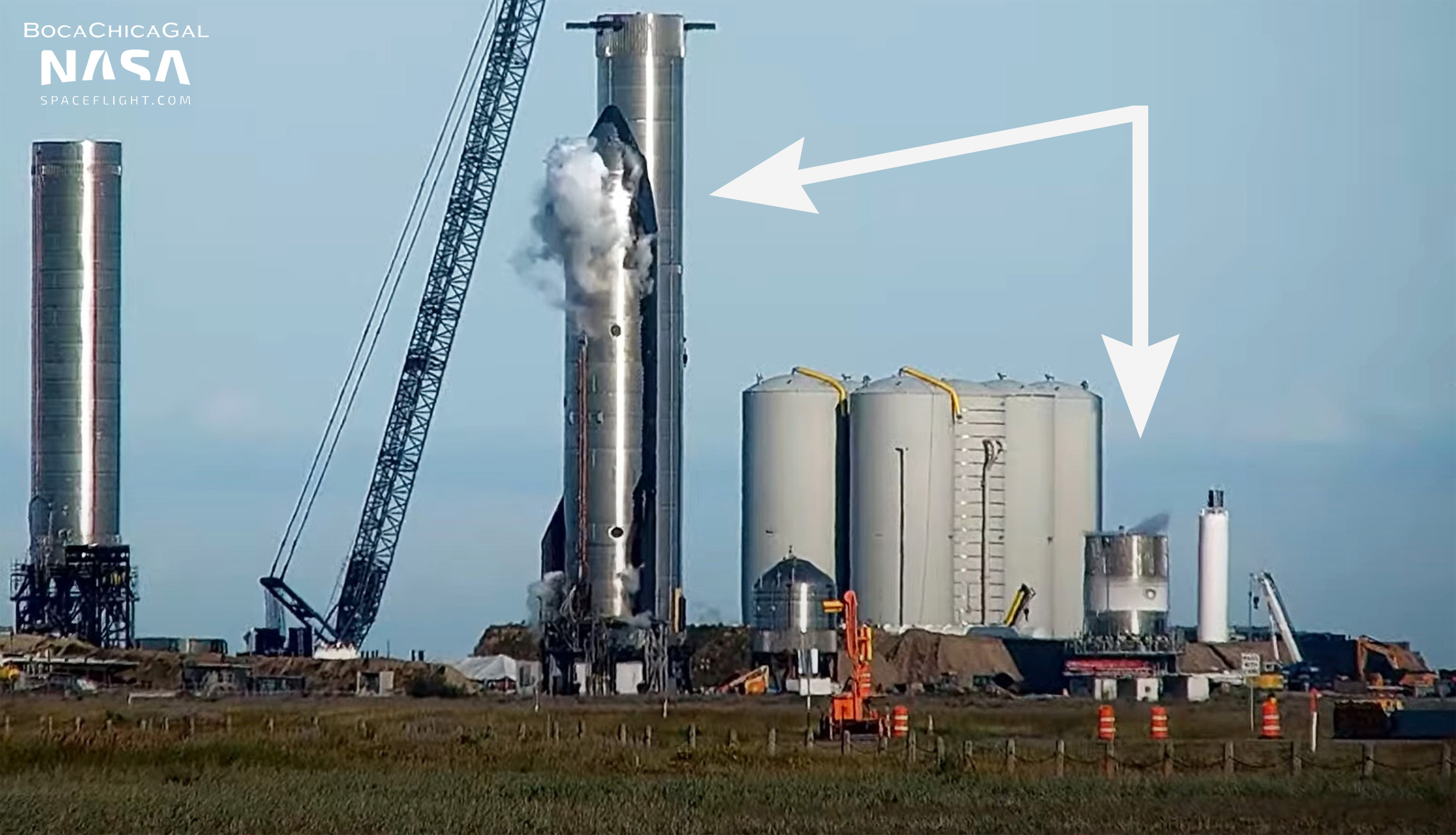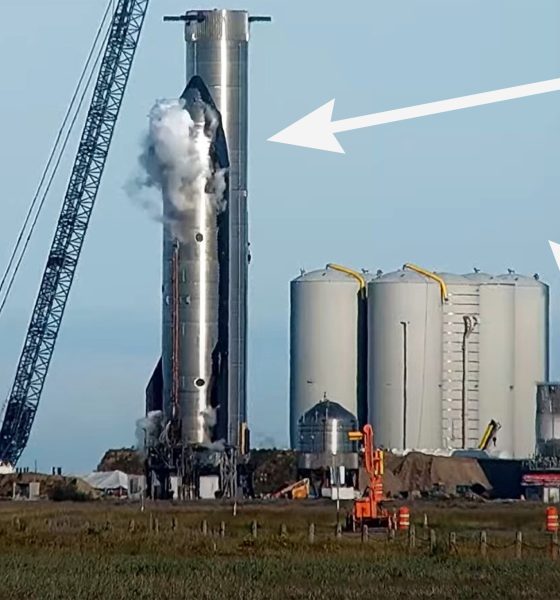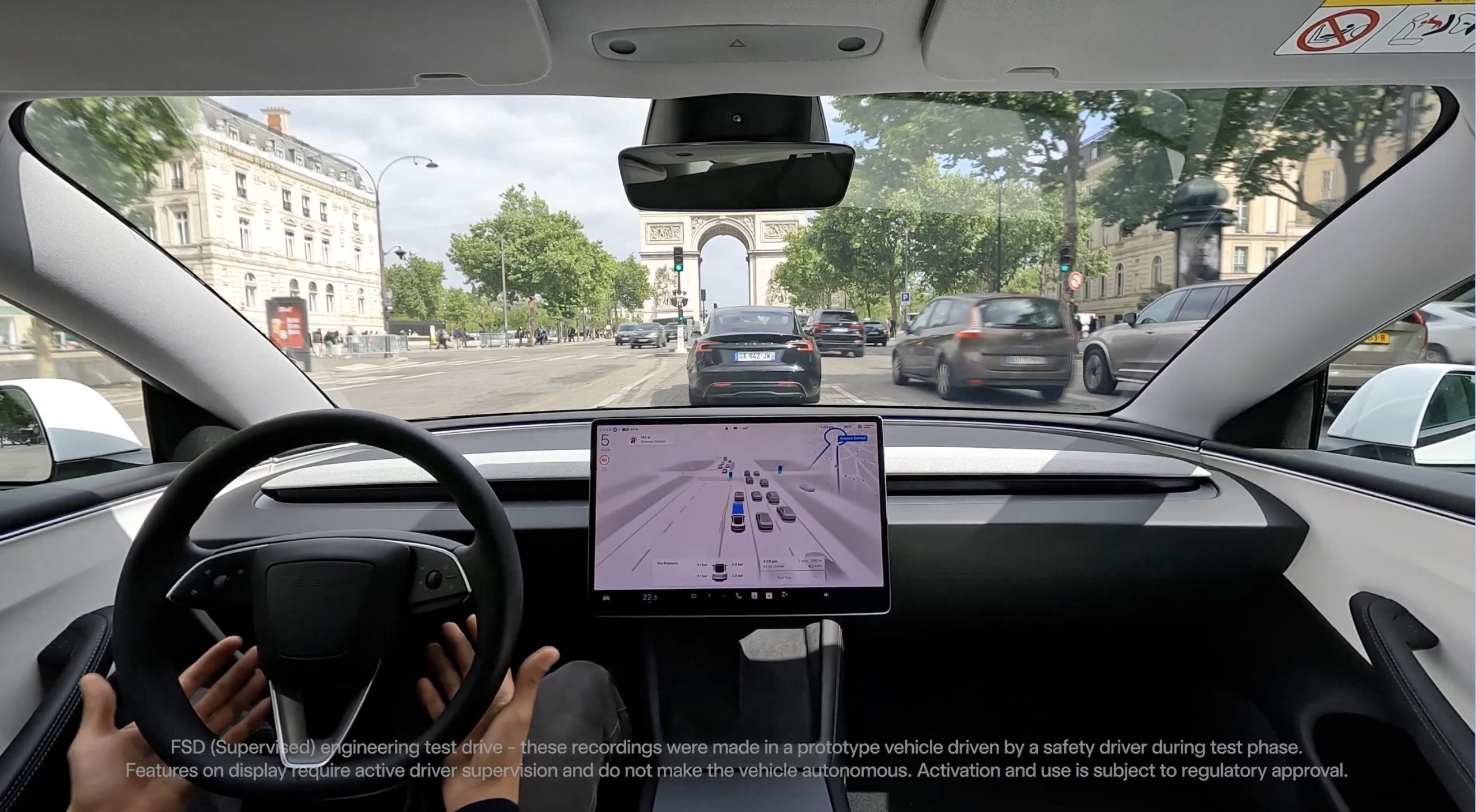

News
SpaceX tests Starship and Frankenstein ‘test tank’ simultaneously
After another few weeks of downtime, SpaceX has simultaneously tested the first orbital-class Starship prototype and a Frankenstein-esque ‘test tank’ at its South Texas facilities. While nothing that occurred was all that visually spectacular, the afternoon of testing was still noteworthy for a couple of reasons.
First up, following a successful six-engine Raptor static fire – the first in Starbase history – on November 12th, all signs pointed to Starship S20 attempting another static fire (its fourth) on December 1st. In the almost three weeks of inactivity between those planned tests, SpaceX likely performed extensive inspections of the pathfinder prototype and its Raptor engines. Technicians also repaired the minor heat shield damage and tile loss that testing incurred and patched a few other ‘holes’, effectively leaving Ship 20 with the first fully finished heat shield by the end of November.
Earlier this week, one of the few remaining Boca Chica Village residents received a safety notice from SpaceX indicating that a static fire test was scheduled on Wednesday, December 1st – followed soon after by a notice to mariners (NOTAM) warning boaters to keep to a safe distance. Two hours into the 10am to 6pm CST test window, Starship S20 was already venting and starting to get frosty, confirming that propellant loading had begun. A little over an hour later, it was clear that SpaceX had aborted the first static fire attempt of the day. For the next three hours, Ship 20 exhibited some unusual behavior including new vents, an apparent header tank pressurization or fill test, and still more odd venting in new places.
In the middle of Starship’s weird nose-related testing, SpaceX began simultaneously loading a new ‘test tank’ known as B2.1 with liquid nitrogen (LN2) – marking the first truly simultaneous test of multiple Starship test articles. As Ship 20 seemingly detanked for the second time that day, the B2.1 tank was fully loaded with LN2 and apparently pressure-tested not long after. A few hours later, the test tank was also detanked and the road to the pad was reopened, marking the end of the day’s testing.
Normally, nothing is particularly unusual or noteworthy about test tank testing. Since January 2020, SpaceX has routinely built and tested tanks that are effectively just shorter versions of actual tanks and hardware, using them to qualify changes to Starship’s design, materials, operations, and more before applying those changes to full-size prototypes. B2.1 is the tenth dedicated test tank to reach the launch pad in a little under two years.
Normally, the ‘B2.1’ name SpaceX has given the tank would imply that it’s a newer booster test tank (using Bx instead of BNx) following in the footsteps of BN2.1, which passed cryogenic and load testing this summer. Instead, though, B2.1 is a bit of a nightmarish amalgamation of seemingly random Starship and Super Heavy parts. Its forward dome is an old, unused booster section complete with the hexagonal structure grid fins would have been brace against. Its aft section is a booster thrust structure. Up to that point, it’s effectively just a copy of BN2.1.
However, SpaceX inexplicably installed a Starship thrust dome inside B2.1’s booster thrust structure, creating a test tank with no obvious relevance to any conceivable Starship or Super Heavy design or prototype. Further, SpaceX rolled B2.1 to the launch site for testing only after installing it on an unused device that’s believed to be the aft half of a dedicated booster structural test stand. In theory, a sort of ‘cap’ would be fitted on top of a booster or test tank installed in the stand’s base and strong cables would connect the two, allowing SpaceX to subject prototypes to compressive stress – like, perhaps, the forces a booster might experience while carrying a fully-fueled 1300-ton Starship to space. The upper half of that test structure has yet to be moved to the launch site.
Altogether, the weird half-complete test stand and bizarre fusion of ship and booster parts make B2.1’s purpose and initial testing a complete mystery. It’s unclear what value it provides that makes it more of a priority than, say, finally starting to test the first flightworthy Super Heavy booster (B4). Ultimately, the most interesting thing about B2.1’s test debut is the fact that it appears to mark the first use of Starbase’s brand new orbital tank farm, which is approaching completion.

News
SpaceX reportedly mulling IPO, eyeing largest of all time: report
“I do want to try to figure out some way for Tesla shareholders to participate in SpaceX. I’ve been giving a lot of thought to how to give people access to SpaceX stock,” Musk said.

SpaceX is reportedly mulling an initial public offering, eyeing what would be the largest valuation at the time of availability of all time, a new report from Bloomberg said on Tuesday.
It is one of many reports involving one of Elon Musk’s companies and a massive market move, as this is not the first time we have seen reports of an IPO by SpaceX. Musk himself has also dispelled other reports in the past of a similar nature, including an xAI funding round.
SpaceX and Musk have yet to comment on the report. In the past, untrue reports were promptly replied to by the CEO; this has not yet gained any response, which is a good sign in terms of credibility.
Musk has discussed a potential IPO for SpaceX in recent months, as the November 6 shareholder meeting, as he commented on the “downsides” of having a public company, like litigation exposure, quarterly reporting pressures, and other inconveniences.
Nevertheless, Musk has also said he wants there to be a way for Tesla shareholders to get in on the action. At the meeting in early November, he said:
“I do want to try to figure out some way for Tesla shareholders to participate in SpaceX. I’ve been giving a lot of thought to how to give people access to SpaceX stock.”
Additionally, he added:
“Maybe at some point., SpaceX should become a public company despite all the downsides of being public.”
Musk has been historically reluctant to take SpaceX public, at times stating it could become a barrier to colonizing Mars. That does not mean it will not happen.
Bloomberg’s report cites multiple unidentified sources who are familiar with the matter. They indicate to the publication that SpaceX wants to go public in mid-to-late 2026, and it wants to raise $30 billion at a valuation of around $1.5 trillion.
This is not the first time SpaceX has discussed an IPO; we reported on it nine years ago. We hope it is true, as the community has spoken for a long time about having access to SpaceX stock. Legendary investor Ron Baron is one of the lucky few to be a SpaceX investor, and said it, along with Tesla, is a “lifetime investment.”
Tesla bull Ron Baron reveals $100M SpaceX investment, sees 3-5x return on TSLA
The primary driver of SpaceX’s value is Starlink, the company’s satellite internet service. Starlink contributes 60-70 percent of SpaceX’s revenue, meaning it is the primary value engine. Launch services, like Falcon 9 contracts, and the development of Starship, also play supporting roles.
News
SpaceX reaches incredible milestone with Starlink program

SpaceX reached an incredible milestone with its Starlink program with a launch last night, as the 3,000th satellite of the year was launched into low Earth orbit.
On Monday, SpaceX also achieved its 32nd flight with a single Falcon 9 rocket from NASA’s Kennedy Space Center.
The mission was Starlink 6-92, and it utilized the Falcon 9 B1067 for the 32nd time this year, the most-used Falcon booster. The flight delivered SpaceX’s 3000th Starlink satellite of the year, a massive achievement.
There were 29 Starlink satellites launched and deployed into LEO during this particular mission:
Falcon 9 launches 29 @Starlink satellites from Florida pic.twitter.com/utKrXjHzPN
— SpaceX (@SpaceX) December 9, 2025
SpaceX has a current goal of certifying its Falcon boosters for 40 missions apiece, according to Spaceflight Now.
The flight was the 350th orbital launch from the nearby SLC-40, and the 3,000 satellites that have been successfully launched this year continue to contribute to the company’s goal of having 12,000 satellites contributing to global internet coverage.
There are over five million users of Starlink, the latest data shows.
Following the launch and stage separation, the Falcon 9 booster completed its mission with a perfect landing on the ‘Just Read the Instructions’ droneship.
The mission was the 575th overall Falcon 9 launch, highlighting SpaceX’s operational tempo, which continues to be accelerated. The company averages two missions per week, and underscores CEO Elon Musk’s vision of a multi-planetary future, where reliable connectivity is crucial for remote work, education, and emergency response.
As Starlink expands and works toward that elusive and crucial 12,000 satellite goal, missions like 6-92 pave the way for innovations in telecommunications and enable more internet access to people across the globe.
With regulatory approvals in over 100 countries and millions of current subscribers, SpaceX continues to democratize space, proving that reusability is not just feasible, but it’s also revolutionary.
News
Tesla expands new Full Self-Driving program in Europe

Tesla expanded its new Full Self-Driving program, which gives people the opportunity to experience the company’s suite, in Europe.
Tesla recently launched an opportunity for Europeans to experience Full Self-Driving, not in their personal vehicles, but through a new ride-along program that initially launched in Italy, France, and Germany back in late November.
People could experience it by booking a reservation with a local Tesla showroom, but timeslots quickly filled up, making it difficult to keep up with demand. Tesla expanded the program and offered some additional times, but it also had its sights set on getting the program out to new markets.
It finally achieved that on December 9, as it launched rides in Denmark and Switzerland, adding the fourth and fifth countries to the program.
Tesla confirmed the arrival of the program to Denmark and Switzerland on X:
Now available in Denmark & Switzerland
🇩🇰 https://t.co/IpCSwHO566 https://t.co/V2N5EarLNX
— Tesla Europe & Middle East (@teslaeurope) December 9, 2025
The program, while a major contributor to Tesla’s butts in seats strategy, is truly another way for the company to leverage its fans in an effort to work through the regulatory hurdles it is facing in Europe.
Tesla has faced significant red tape in the region, and although it has tested the FSD suite and been able to launch this ride-along program, it is still having some tremendous issues convincing regulatory agencies to allow it to give it to customers.
CEO Elon Musk has worked with regulators, but admitted the process has been “insanely painful.”
The most recent development with FSD and its potential use in Europe dealt with the Dutch approval authority, known as the RDW.
Tesla says Europe could finally get FSD in 2026, and Dutch regulator RDW is key
Tesla said it believes some regulations are “outdated and rules-based,” which makes the suite ineligible for use in the European jurisdiction.
The RDW is working with Tesla to gain approval sometime early next year, but there are no guarantees. However, Tesla’s angle with the ride-along program seems to be that if it can push consumers to experience it and have a positive time, it should be easier for it to gain its footing across Europe with regulatory agencies.








